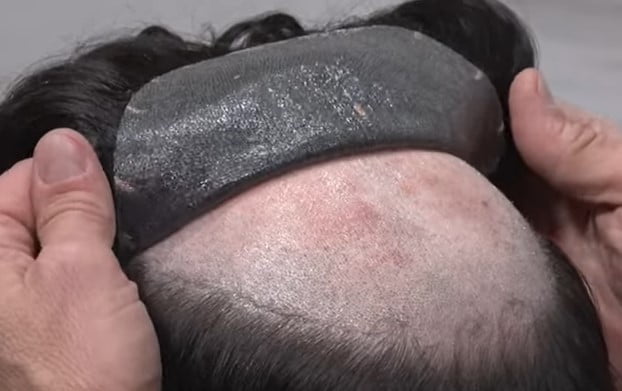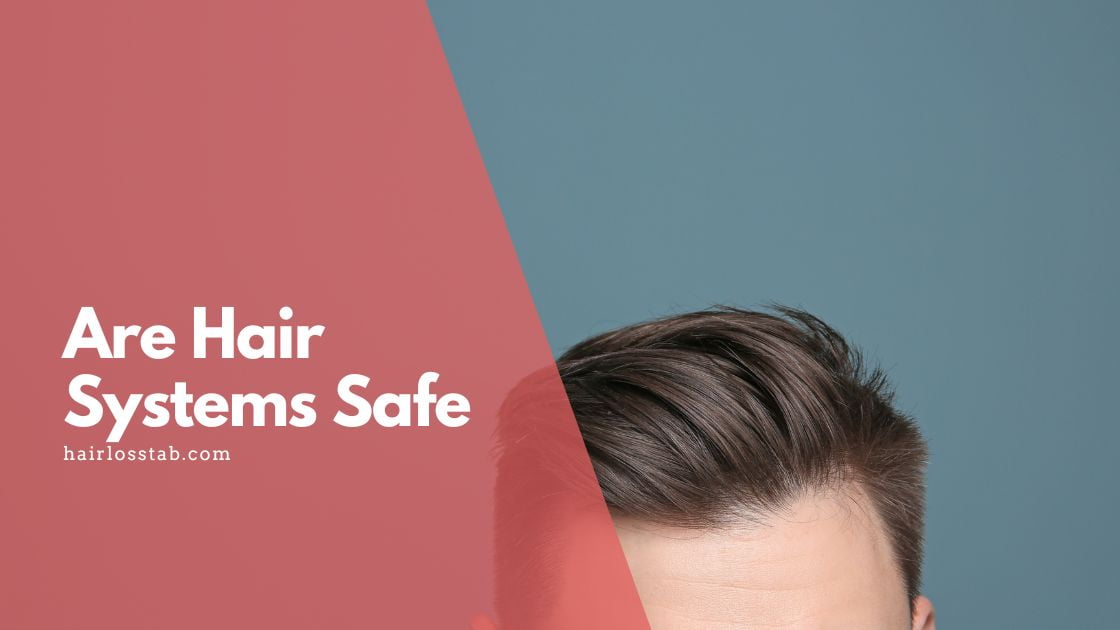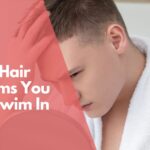Are hair systems safe? This is a question that many people ask when considering using these products to improve their appearance. Hair systems are becoming increasingly popular, as they provide an easy and cost-effective solution for those looking to enhance their look without the need for expensive treatments or surgery. But with any product that you put on your body, safety should be at the forefront of your mind.
In this article, we will explore what hair systems are and how safe they actually are. We’ll discuss potential risks associated with them, as well as tips to ensure that you use them safely and effectively. By the end of this article, you should have a better understanding of whether or not hair systems can help you meet your beauty goals in a safe way!
Are Hair Systems Safe: Explained
Yes, wearing a hair system may lead to damage, but this is often due to myths and misconceptions. It’s important to consider certain factors when wearing a hair system, as it can enhance your appearance and serve cosmetic purposes, but carelessness can lead to scalp damage and a negative impact on your look.
Are Hair Systems Safe: Factors To Keep in Mind
Attachment method
It is recommended to attach hair systems directly to your scalp rather than your hair to prevent hair damage. This involves shaving a portion of your head so the hairpiece can be attached without pulling on your hair. By doing so, you can avoid negative effects on your hair while wearing the hair system.
Type of adhesive used

It’s important to choose the right adhesive that works best with your skin sensitivities, as there are different types of adhesives available in the market that react differently to your body chemistry. Incorrect use of adhesives can cause scalp irritations.
When an adhesive, take into account your location, how much the seasons change there, and your skin’s sensitivity to ensure that you select the appropriate product.
Scalp protector
If you wear a hair system, it’s important to invest in a scalp protector to keep your hair and scalp healthy, regardless of whether you have sensitive skin. A scalp protector is applied to the skin before using adhesive and creates a barrier to prevent irritation and maintain the quality of your hair and scalp.
Safety Tips To Best Use Hair Systems
Proper Installation, Won’t Cause Harm

- A patch test to ensure that the use of the products does not cause any skin reactions for the client is key.
- Cleaning all surfaces that will impact installation with 99% alcohol.
- To ensure a strong bond for the system, it is also recommended to shave the client’s hair in the area where it will be applied.
- Applying a scalp protector to prevent any possible irritation or reactions that can cause damage to their scalp.
Chemicals in Tapes are Harmless
Candidates often worry about the ingredients in the adhesives used to attach hair systems, particularly tape. They fear that long-term exposure to chemicals in the tape could have harmful effects.
However, the manufacturing process involves flashing off the chemical ingredients used in tapes during the curing phase. This renders them inactive and safe to use for bonding hair systems. Therefore, the tape is the most secure and safest option for installing hair systems.
The Right Products Won’t Cause Irritation
Using the wrong products can lead to irritation or allergic reactions. To avoid this, it’s important to have a pre-install consultation.
Making sure your technician understands your body chemistry, environment, and activities can help determine which products will work best for you.
Wearers aren’t Harmed by Polyurethane

People who wear poly hair systems are often concerned about the safety of the material. Specifically, they wonder if polyurethane is safe for their skin and if it can cause any negative side effects. The answers to these questions are generally yes and no, respectively.
Polyurethane is made by blending polyol and di-isocyanate together, and it is an inert material. Depending on the particular blend of ingredients used, polyurethane can actually be safer than other materials used in hair systems.
Additionally, polyurethane is used in a wide variety of products, including medical equipment, spandex, baby equipment, and playgrounds. This widespread use indicates that the risk of any harmful side effects is minimal.
Common Questions About Are Hair Systems Safe
Will hair systems irritate your scalp?
There is a misconception that hair systems are harmful to the scalp and can cause additional hair loss. The reality is that hair systems are completely safe when handled and maintained properly.
How long can you keep a wig glued on?
Experts advise taking a break from wearing a lace front wig after six weeks. However, it’s important to note that some adhesives are meant for short-term use only, so the maximum length of time you can wear the wig depends on the type of adhesive used. Feel free to remove the wig earlier than six weeks if needed.
Will hair systems stop hair from growing?
Some people might be concerned about the effect of wearing a hair system on their hair transplant. However, the answer is no; wearing a hair system will not harm the transplant. Several users with transplants wear the hair system over them, and the transplanted hair continues to grow beneath it.
Final Thoughts
So, are hair systems safe? Overall, hair systems are a safe and effective way to cover up thinning or balding areas of the scalp. While there is some risk associated with using them, these can be minimized by ensuring that you purchase your system from a reputable supplier and follow all instructions carefully when applying it.
In addition, regular maintenance visits will help keep your hair looking natural and healthy for many years to come. With proper care and attention, hair systems can provide an excellent solution for those looking to restore their confidence in their appearance without resorting to surgery or other invasive treatments.



